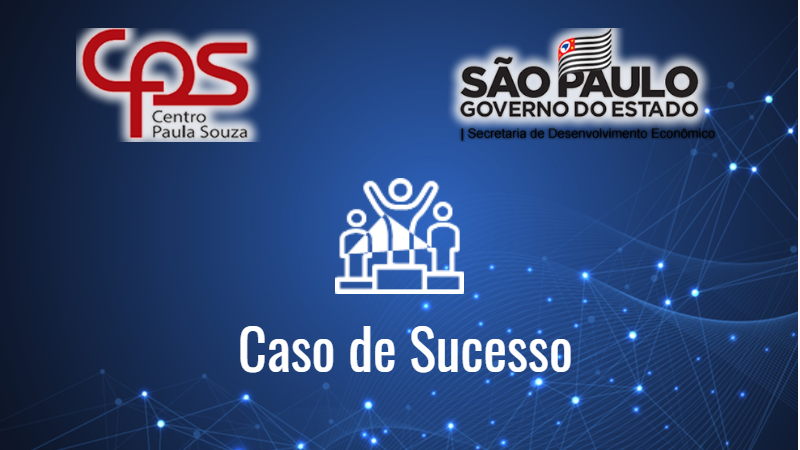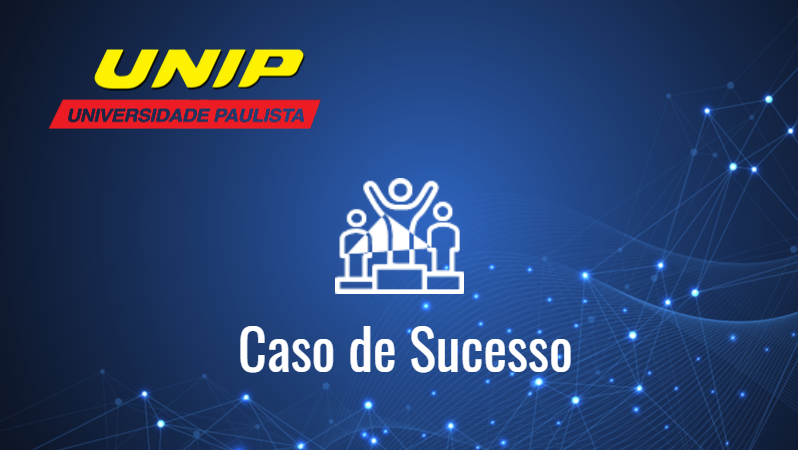Centro Paula Souza — Como o Covid-19 acelerou a transformação digital na maior instituição pública de ensino técnico da América Latina
Diante do isolamento social exigido para proteger a população da Covid-19, o Centro Paula Souza, instituição pública de referência em educação técnica no Brasil, não podia simplesmente suspender as aulas de seus 350 mil alunos de ensino médio e superior. A solução encontrada combinou recursos do Office 365, como o Microsoft Teams, e serviços cognitivos (IA) do Azure para assegurar o perfeito funcionamento das 296 unidades do CPS e a manutenção de todas as classes e matérias, contando com mais de 75% de adesão dos alunos às aulas remotas já no quarto dia de funcionamento de uma nova realidade de ensino, quando este texto foi escrito.
A Instituição
Referência em educação técnica de nível médio e superior
O Centro Paula Souza (CPS), vinculado à Secretaria de Desenvolvimento Econômico do Estado de São Paulo – o estado de economia mais importante no país – oferece educação pública de reconhecida qualidade no nível médio e superior. Está presente em 322 municípios paulistas, administrando 223 Escolas Técnicas (Etecs) e 73 Faculdades de Tecnologia (Fatecs), que somam mais de 350 mil alunos de excelente nível, pois as vagas nas Etecs e Fatecs são disputadíssimas por estudantes de todas as categorias sociais.
As Etecs, concentram a grande maioria dos alunos do Centro Paula Souza – mais de dois terços –, matriculados em 185 diferentes cursos voltados aos mais diversos setores; as Fatecs contam com 80 cursos de graduação, como Construção Civil, Mecânica, Informática e Tecnologia da Informação.
O CPS oferece também cursos de pós-graduação, atualização tecnológica e extensão.
O desafio
Projeto a ser realizado em tempo recorde para atender a um enorme volume de usuários de forma remota e com segurança, implicando a transformação digital do ensino no CPS.
O último grande desafio enfrentado pelo Centro Paula Souza está vinculado à necessidade do isolamento social adotado oficialmente pelo Estado de São Paulo em função da pandemia do Covid-19. Suspensas as aulas nas instituições de ensino público em todo o estado, como manter as atividades pedagógicas para centenas de milhares de alunos, geograficamente dispersos por todo o estado, respeitando o ano letivo? Além disso, uma segunda vertente desse desafio era a questão administrativa, agora a ser realizada remotamente por colaboradores em todo o estado.
A solução
A suíte Office 365, Microsoft Teams, serviços cognitivos (AI) e Windows Virtual desktop do Azure asseguram a continuidade das aulas e dos serviços administrativos em tempos de pandemia
Combinando o Office 365, já implementado desde 2014, com a ferramenta de colaboração Teams, à qual o Centro Paula Souza tinha acesso há três anos, o Diretor de Tecnologia, Ruben Pimenta, conseguiu enfrentar com sucesso o desafio de conectar 350 mil alunos e 22 mil professores de modo a reiniciar as aulas, interrompidas em meados de fevereiro, já no início de maio. Pimenta procurou a Microsoft que, ela própria, indicou a ITCore, parceiro já com larga experiência no setor de educação,
“E aí nós passamos a desenvolver o projeto de como ensalar – o que eu chamo de ensalar é colocar em sala de aula – os professores de cada matéria, em cada unidade, com os seus devidos alunos, em todas as Etecs e Fatecs. Esse projeto tinha pouco tempo para acontecer e nós conseguimos fazer isso em um tempo que eu considero maravilhoso: foram criados 110 mil teams (salas de aula virtuais), para atender alunos e professores, em menos de um mês”, conta Pimenta.
O projeto não parou por aí. Com o apoio da Microsoft e da ITCore foi desenvolvido, em uma semana, um robô (assistente virtual) por meio dos serviços cognitivos (Inteligência Artificial) do Azure, automatizando respostas às perguntas de toda a comunidade relativas à nova realidade.
E enquanto essa plataforma está sendo implementada, desenrola-se o desenvolvimento de uma aplicação móvel que atenda aos alunos com carência em planos de dados. De acordo com Pimenta, o CPS seria responsável pelo custo do consumo de dados desses alunos, permitindo que todos possam se conectar sem problemas às aulas.
Já utilizando Azure como solução em nuvem para o serviço administrativo, o CPS incorporou, em apenas dois dias, o Windows Virtual Desktop para criar um ambiente capaz de atender a cerca de 450 máquinas, permitindo que todos os servidores administrativos executassem remotamente suas atividades.
Planos para um futuro próximo incluem o aprimoramento da segurança, especialmente em função da LGPD (Lei Geral de Proteção de Dados) que deverá entrar em vigor no Brasil em 2021, e que trará implicações, conta o Diretor, “no modo como o aluno usa a ferramenta: o que é que ele compartilha, o que ele pode e o que não pode fazer, se ele pode compartilhar internamente, se o professor pode compartilhar coisas da instituição fora da instituição, e por aí vai”.
Benefícios
Adesão de 75% dos alunos mostra um caminho sem volta
Os alunos e professores totalmente compraram a ideia das aulas remotas. Basta constatar a adesão de mais de 75% dos alunos, verificada em apenas quatro dias, da segunda-feira, quatro de maio, quando o novo modelo foi iniciado, até a sexta-feira, oito. Pimenta vê nesses números “um sucesso absoluto.”
“É uma mudança muito grande. Eu considero isso uma transformação digital na educação, e o Paula Souza é um dos pioneiros nessa mudança. Neste momento nós estamos, como se costuma dizer no mercado de TI, com o avião decolado. Agora vem a melhoria de processos, segurança, disponibilidade… Com ajuda da ITCore, tenho certeza de que continuaremos a fazer um trabalho inovador”, diz Pimenta.
Resumindo, ele afirma que “esse projeto tem se mostrado um movimento de transformação digital na educação que é muito forte – e que, no meu entendimento, não tem volta”.


